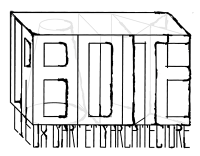- +216 71 772 000
- laboite@kilanigroupe.com
- Monday to Friday, 11am to 5pm.
Fakhri El Ghezal
«I was a prisoner in your skull»
December 2016 I March 2017
La Boîte I Un lieu d’art contemporain
Revelation, revelability: it was always a matter of light. A manifestation through light and in light. This – a secret, a mystery, a hidden meaning – reaches the light of day or of the laboratory, and offers itself to shared custody. But then, at the very moment when it is offered up to general vision, the light that showed it becomes invisible, withdraws, by deception or out of respect, so that the contours of the manifestation can take shape.
Fakhri El Ghezal’s photographs are perhaps simply an attempt to show this revealing light itself. They point towards the very process of revelation. And therefore towards the invisibility behind all visibility. Revealed traces of the revelation itself, in the violence of its appearance.
Violence? The wounds necessary to any exposure of an inside as well as an outside. The light gathered here by the photographer falls like a thunderbolt on the soul and the landscapes, tearing them from their latency. The tranquillity of the landscapes and moments captured is disturbed by the vibration of an almost intrusive light, which only manages to show, the better to hide what is to be seen.
Look at how the grain in Fakhri El Ghezal’s works (or visions) sows light and darkness at the same time. It is as if photography is not based on a captured moment, nor does it reflect a definite state, but rather shows itself through a never-ending interplay between luminous intrusion and discreet obscurity. An auto-bio-photography inscribed by a combination of a desire for exhibition (of oneself and one’s world) on the one hand, and a withdrawal or retreat on the other. Between speech and silence: Fakhri El Ghezal’s photographs speak through their silence.
Black is not the only concealer. Excess light hides too. This is quickly apparent in the photographic sequences. When overexposed, contours dissipate, and the light burns away the receptacle in which it was meant to settle. Light, like spirit and as spirit, carries within it this fundamental ambiguity: it can annihilate what it gives life to, it can obscure what it manifests. Violence of the light? Violence of the spirit?
What if we thought of memory as a photographic revelation? What if every memory should be revealed as a photograph? With this eternal hesitation between manifestation and obscuration? What would an over-exposed memory be like? A memory framed and reframed? Fakhri El Ghezal’s work certainly suggests this. Memory, revealed to oneself and to others, cannot appear without suffering all that the image suffers in its appearance in the light.
“I was a prisoner in your skull”: a song title that reflects both memory and photography. Like an event of light trapped both in the mind and in the camera body (the film). So many wounds and burns, so many traces that show and hide. Displayed and kept. Given to the eye in a play of light that shows only to preserve. A memory that sings between silences and cries. A poem of light.
Arafat Saadallah, 2016
“Fakhri El Ghezal (1981), photographe à l’origine d’images sibyllines, cultivant à dessein « l’inquiétante étrangeté », le Unheimlich, opte pour ce type d’accueil, sans euphorie a priori. « Es ist so », « c’est ainsi », comme le relevait Hegel, il convient donc de faire avec la phénoménologie du réel, quelque forme qu’elle prenne. El Ghezal, pour La Boîte, développe l’œuvre sérielle I-Was-A-Prisoner-In-Your-Skull
(« J’étais un prisonnier dans ton cerveau »), l’équivalent d’un récit biographique à épisodes. Cet ensemble de photos N & B ou couleurs, autant de Séquences, selon les termes mêmes de l’artiste, est un parcours de vie. Séquence A#1 : la vue d’un paysage d’arbre sous le ciel le long d’une route, effet nébuleux et crépusculaire. Séquence A#4 : la vue d’une route qui s’enfonce dans le brouillard. Séquence A#8 : la vue de la partie haute d’un minaret se détachant sur un ciel lavasse. Séquence B#2 : la vue de chaises alignées par rangées, comme pour un
spectacle, devant une maison, mais recouvertes de housses, non appelés à servir dans l’immédiat. Séquence D#1 : la vue du bras nu et tendu de l’artiste, de façon vraisemblable, qui s’est photographié lui-même, sans rien autour. Séquence D#4 : la vue d’une route vide qui s’enfonce dans un paysage arboré, au crépuscule… Séquence E#1 : de nouveau la vue du bras de l’artiste, mais cadré d’une façon différente… Chaque «séquence», une image photographique toujours sobre, est ici un moment de présence à l’ordre des choses, une coupe dans le temps personnel. Le critique d’art et commissaire d’exposition Arafat Sadallah, avec justesse, parle d’« auto-photo-biographie ». Les images-traces de Fakhri El Ghezal sont des indices, le signe d’une présence, une succession d’épisodes existentiels dont l’historicité est indéniable, éprouvée, ressentie, rien d’extraordinaire ne se passerait-il.”
Paul Ardenne
